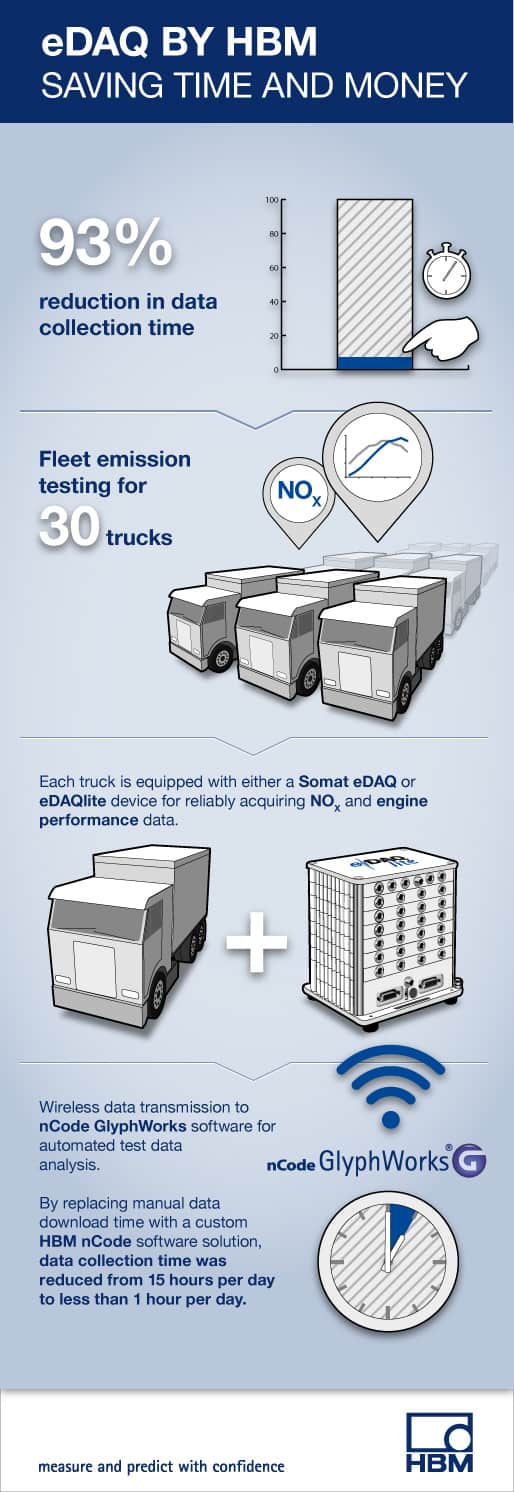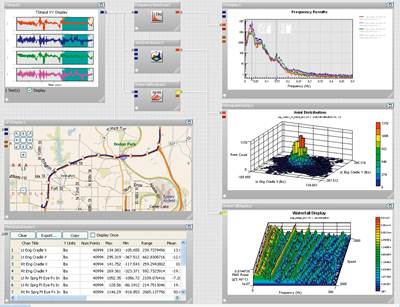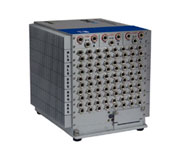Achieving a 93% Reduction in Fleet Vehicle Test Data Collection Time
Changing emissions standards
Beginning with all heavy-duty truck engines manufactured on or after January 1, 2010, the U.S. Environmental Protection Agency issued new lowered NOx emissions standards. To meet these requirements, many heavy-duty engine OEMs, particularly those whose manufactured end products are found within Class 7 to Class 8 trucks, have implemented selective catalytic reduction (SCR).
SCR requires the periodic addition of a urea-based diesel exhaust fluid (DEF) to the heavy truck engine. The DEF is added to the exhaust stream in the presence of a catalyst. The interaction between the catalyst and fluid results in the chemical conversion of unwanted NOx compounds into more environmentally friendly water and nitrogen gas. To achieve optimized NOx emission reductions, automotive engineers must work to continuously fine-tune the delivery of the dosing agent to the engine exhaust.
Streamlining data acquisition processes
A leading Tier 1 supplier of emissions and ride control products wished to streamline their fleet vehicle data acquisition processes. The ideal system required compatibility with both urea and hydrocarbon-based dosing agents. It also needed to ensure continued engine interface flexibility. The testing was conducted either with independent dosing system operations or integration with a direct electronic control unit. The prospective customer was finding a general lack of commercially available products to meet such stringent needs.
The customer made a final decision to work with HBM due to its extensive automotive DAQ expertise, excellence in technical support, and field-proven pedigree within similar applications.


